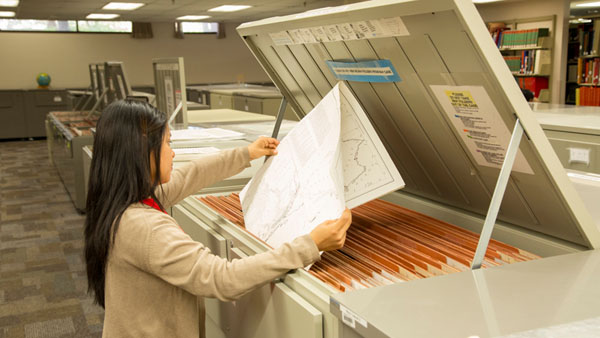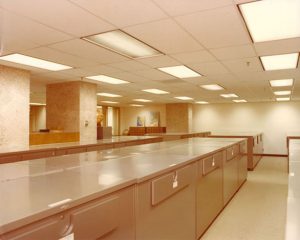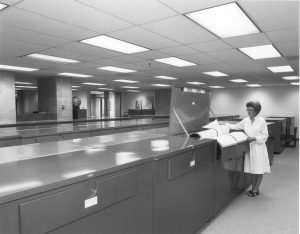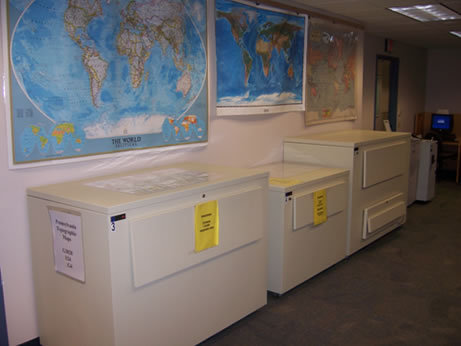MAP STORAGE CABINETS PERFECT FOR TOPOGRAPHIC MAPS
The University of Arizona Library in Tucson Arizona has an extensive map collection. In fact Ulrich Planfiles house many of these maps. Before, we featured this library in one of our map storage cabinet brochures from the 1980’s. As shown above the librarians had arranged the map storage cabinets in rows and placed directly on the floor in the map room.
MAP STORAGE CABINETS ON MOVABLE AISLE
At the present time the library has mounted these map storage cabinets to a movable aisle, high density system. In essence this system is a series of movable platforms that roll together and compress into a solid block. In short, eliminating aisle ways and saving space, allowing for more storage in a given area. Then to access an individual cabinet you roll the platforms apart to create a single aisle way where needed. Ulrich Planfiles use much less space than flat drawer files to begin with (about 66% less). But when you use Ulrich Planfiles in conjunction with movable aisle, high density systems the space savings is tremendous.
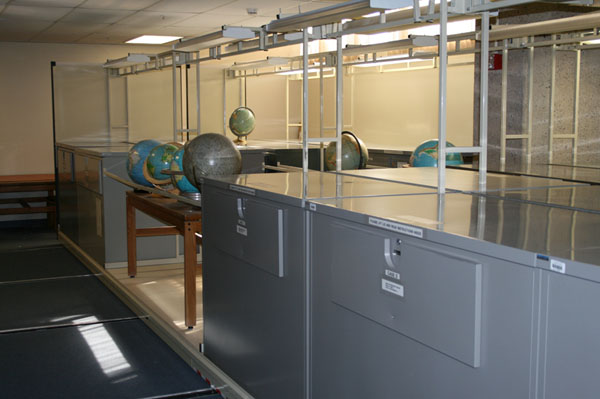
In fact, Ulrich Planfiles really work well on these systems because you do not have to allow for space to open the drawers. Of course with the Planfile, you do all your filing from the top. Therefore the aisle only needs to be wide enough for the operator to comfortably work. Moreover there are no drawers to accidentally open as the platforms move.
ACTIVE MAP STORAGE COLLECTION
Of course the map collection at the University of Arizona is quite active. In fact, Hayri Yildririm, the Director of Library Facilities told us that many users access the maps on a regular basis. As can be seen combining Ulrich’s space saving design and the movable aisle, high density system creates a very efficient filing solution!
